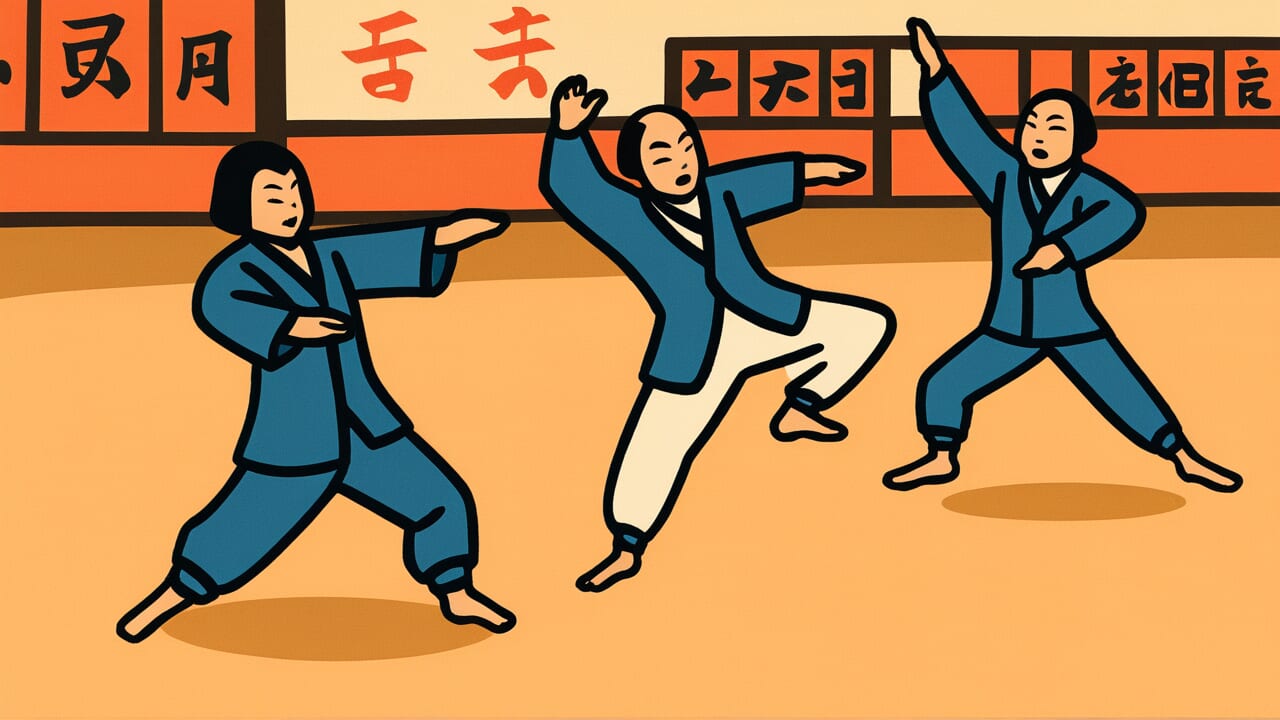How to Read “When the stage tilts, the dance cannot be performed”
Chi ga katamuite mai ga mawarenu
Meaning of “When the stage tilts, the dance cannot be performed”
This proverb means that without basic conditions in place, you cannot carry out your intended activities.
No matter how skilled or talented you are, you cannot show your true abilities if the foundation or environment is not properly prepared.
People use this saying when explaining situations where things don’t go well due to poor preparation or inadequate conditions.
For example, when necessary tools are missing, basic knowledge is lacking, or support from others cannot be obtained.
This expression clarifies that failure or difficulty comes not from personal inability, but from missing fundamental conditions.
Even today, this lesson applies when analyzing why projects stall or checking necessary preparations before starting something.
This proverb teaches us the importance of creating the right environment and conditions, not just relying on talent and effort alone.
Origin and Etymology
No clear written records explain the origin of this proverb. However, the structure of the phrase reveals an interesting background.
“Chi” refers to the ground or floor that serves as the stage. “Mai” means dance in Japanese traditional performing arts.
In stage arts like Noh theater and Kabuki, keeping the performance space perfectly level was an absolute requirement.
If the stage tilted, even the most skilled dancers could not perform beautiful dances. They would lose balance and could not demonstrate their true technique.
Japanese traditional performing arts stages were designed with meticulous attention to maintaining level surfaces from the construction phase.
Our ancestors knew that even the slightest tilt would affect performers’ movements and damage the artistic quality.
The wisdom of craftsmen who supported Japanese stage arts likely gave birth to this expression.
Stage carpenters, backstage crew, and performers themselves deeply understood the importance of foundational conditions.
No matter how talented or hardworking, you cannot show your true power if the foundation is not solid.
This proverb expresses this universal truth through the concrete image of a stage.
Usage Examples
- Without enough budget or staff, when the stage tilts, the dance cannot be performed—even the best team cannot produce results
- Neglecting basic training means when the stage tilts, the dance cannot be performed—there’s no way to show your real ability in competition
Universal Wisdom
This proverb has been passed down through generations because it addresses a fundamental human blind spot.
We often focus only on visible results and spectacular achievements, forgetting the importance of the invisible foundation that supports them.
Everyone notices the beautiful dance on stage. But few people notice that the stage beneath the dancer’s feet is perfectly level.
Yet this invisible foundation makes everything possible.
People admire the brilliant image of successful individuals. But they rarely think about the countless basic conditions supporting that success.
This truth applies to every field. Artists need time and space to create. Scholars need research environments. Craftsmen need proper tools.
No matter how talented, no one can produce anything without these basic conditions.
Our ancestors knew that humans easily fall into the illusion that “you can do anything if you just try hard enough.”
That’s why they sounded this warning through this proverb.
True wisdom means understanding the value of steady preparation and foundation-building hidden behind spectacular achievements.
This proverb quietly but powerfully continues to speak the life truth that the key to all success lies in the unnoticed foundation.
When AI Hears This
Dancing requires an absolutely level floor, yet we rarely think about “floor levelness.” This is exactly the blind spot in modern system design.
For example, logistics systems assume roads are passable. But few companies seriously calculate the probability of that assumption failing.
What’s interesting is that prerequisite collapse has a critical threshold. You might still dance with a 1-degree tilt. Maybe even 2 degrees.
But at 3 degrees, suddenly everything becomes impossible.
This nonlinear collapse pattern was observed in supply chain failures during the 2011 Great East Japan Earthquake.
One parts factory stopping halted automobile production worldwide for weeks.
System theory calls this a “hidden single point of failure.” There’s only one stage floor. It cannot be replaced.
The more irreplaceable a prerequisite condition, the more we tend to forget its existence.
Electricity, internet, logistics, currency systems—these are so obvious like air that they easily slip through risk assessments.
This proverb teaches a paradox: monitoring and redundancy of prerequisites can be more important than efforts to improve performance.
Improving the floor’s earthquake resistance protects the dance better than increasing practice time.
Lessons for Today
This proverb teaches modern people the importance of having the courage to stop and check your footing before rushing toward results.
Modern society emphasizes results and demands immediate outcomes.
But forcing ahead without proper foundations only leads to exhaustion without showing your true abilities.
If you feel stuck right now, it might not be lack of ability. It might be a sign that basic conditions are not in place.
What matters is not dismissing steady preparation. Taking time to gain necessary knowledge. Gathering proper tools. Finding collaborators.
This “work of leveling the stage” is unglamorous and time-consuming. But it’s never wasted.
Rather, this foundation-building is the key to making your talent shine brightest.
If you’re not getting the results you want now, you don’t need to blame yourself.
Start by preparing your environment. Don’t rush. Build your foundation one step at a time.
That accumulation will eventually create the stage where you can truly perform your dance.



Comments